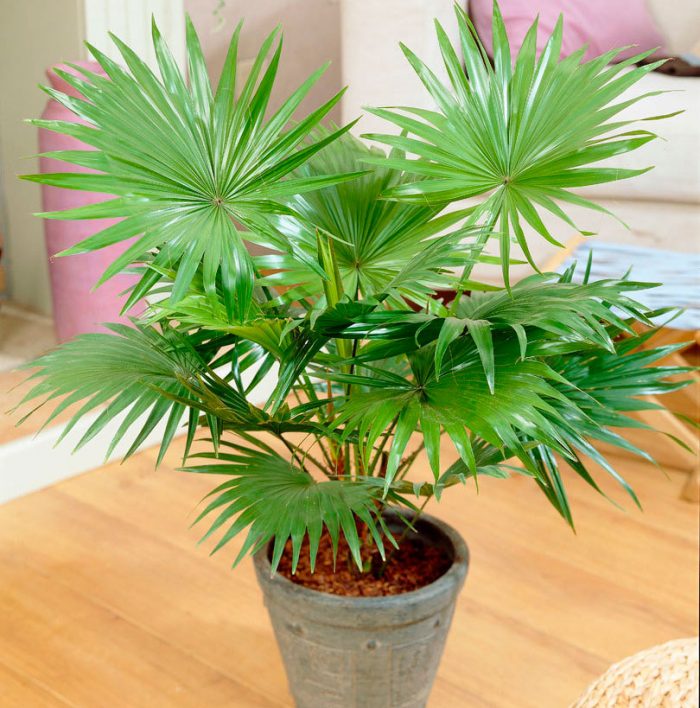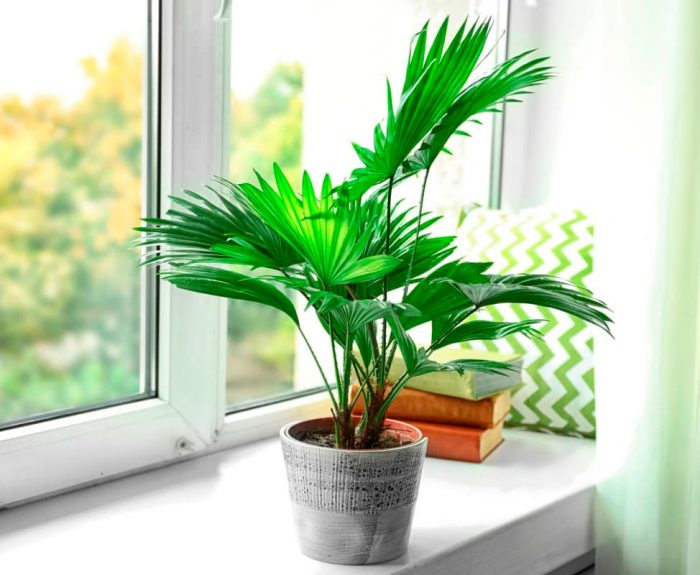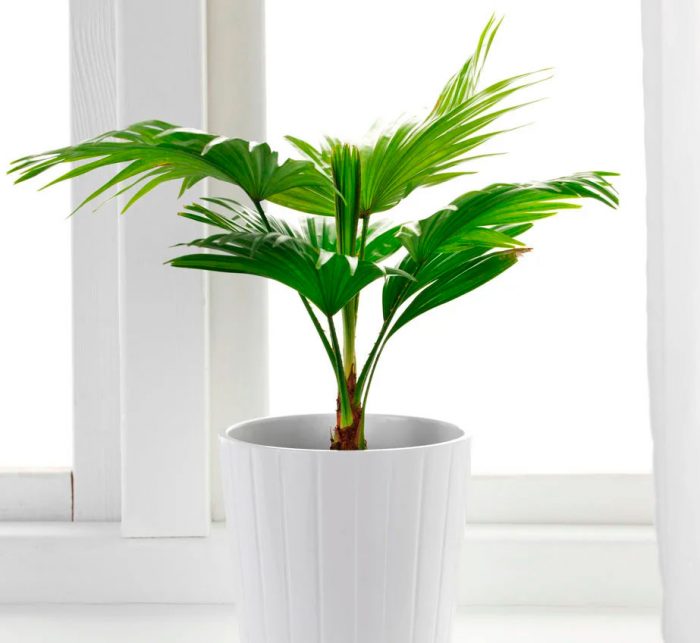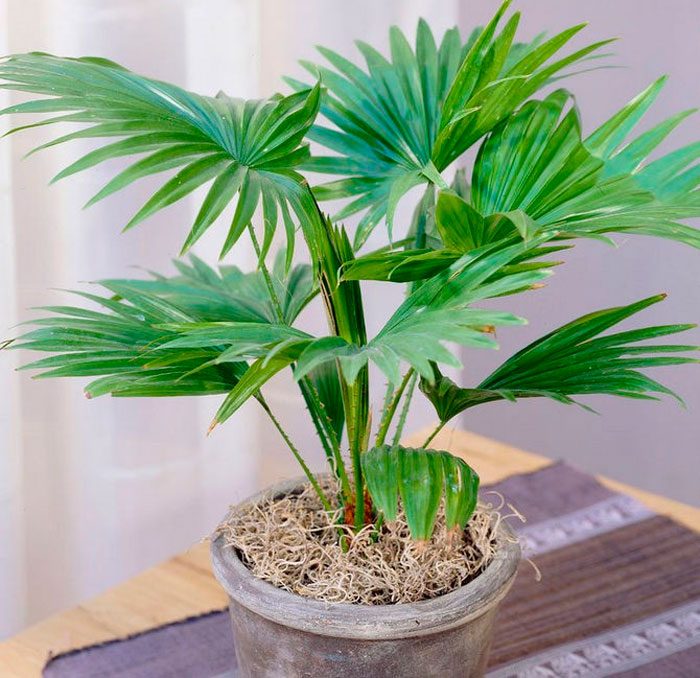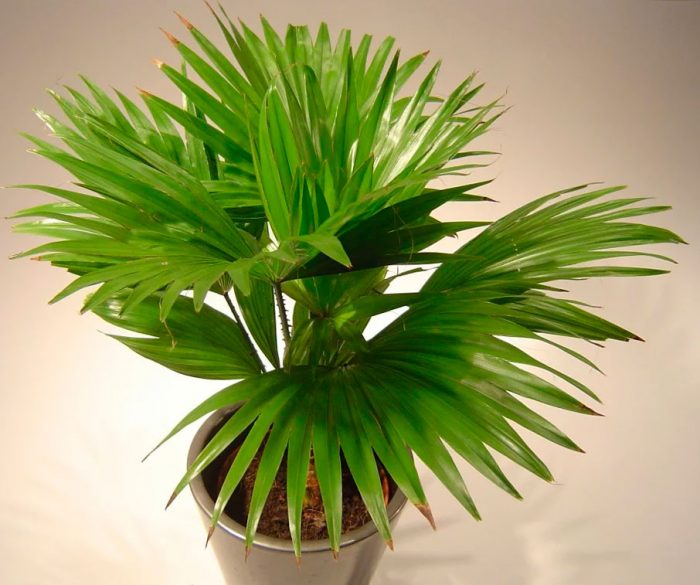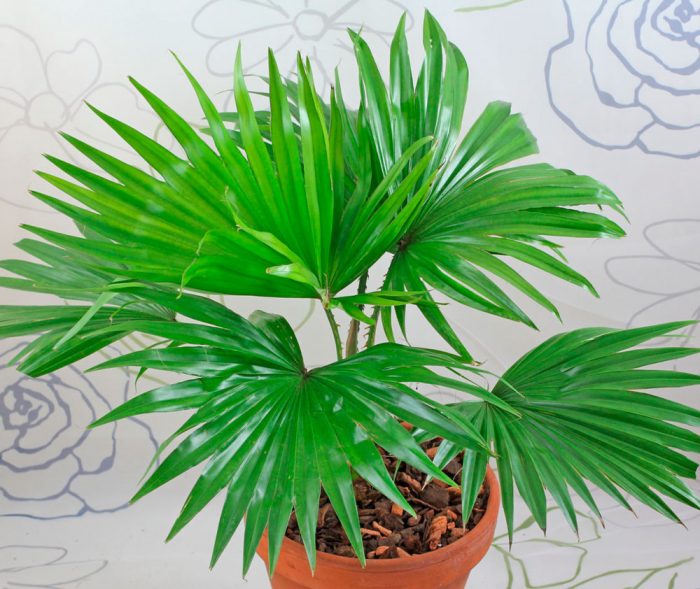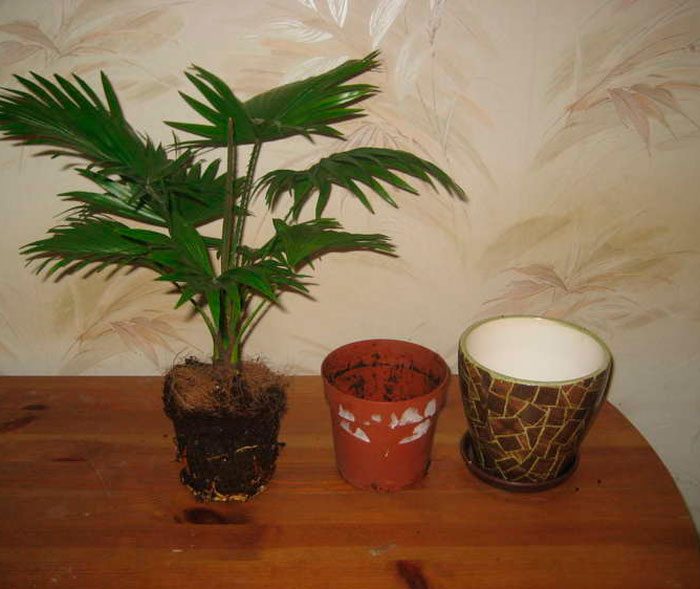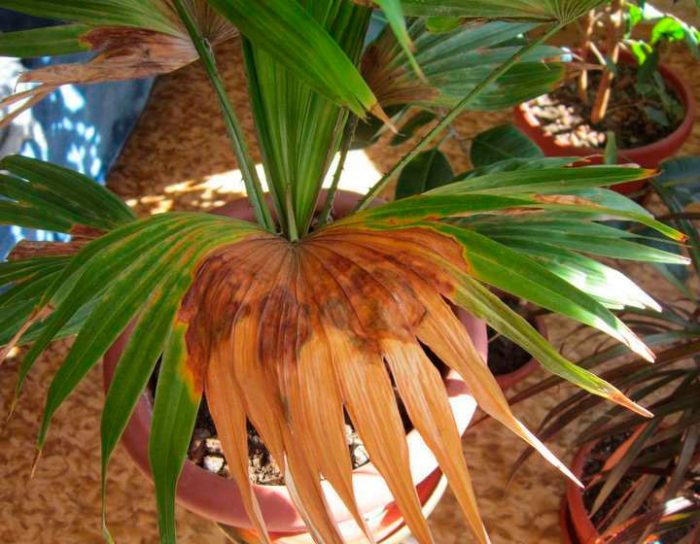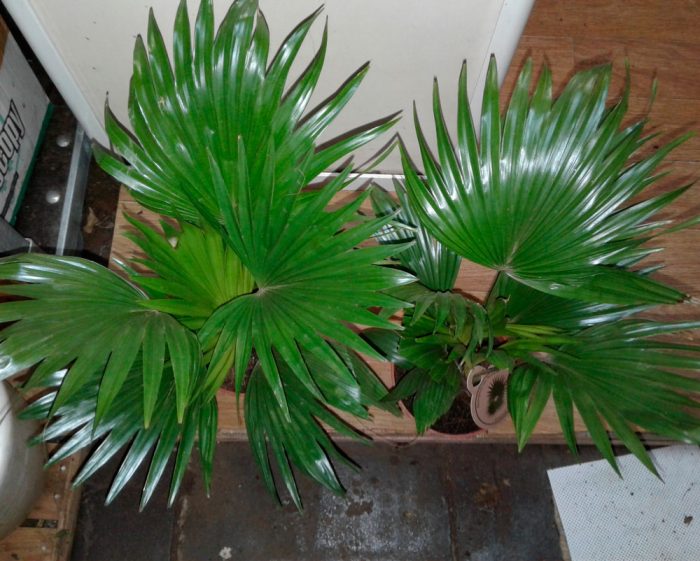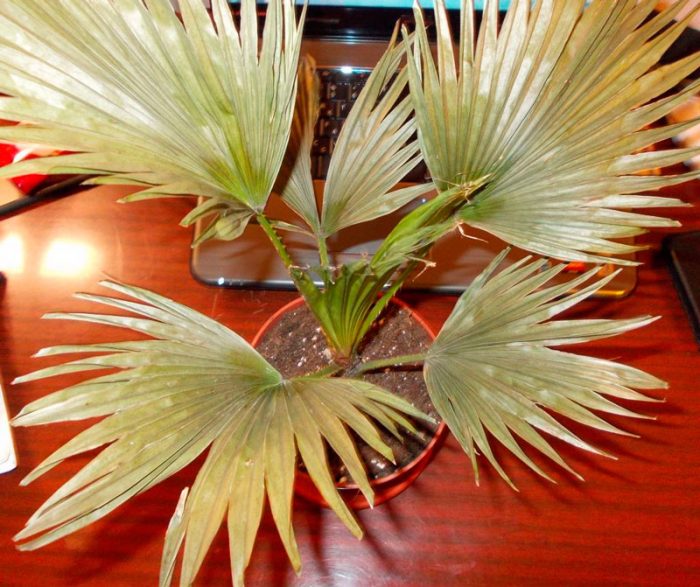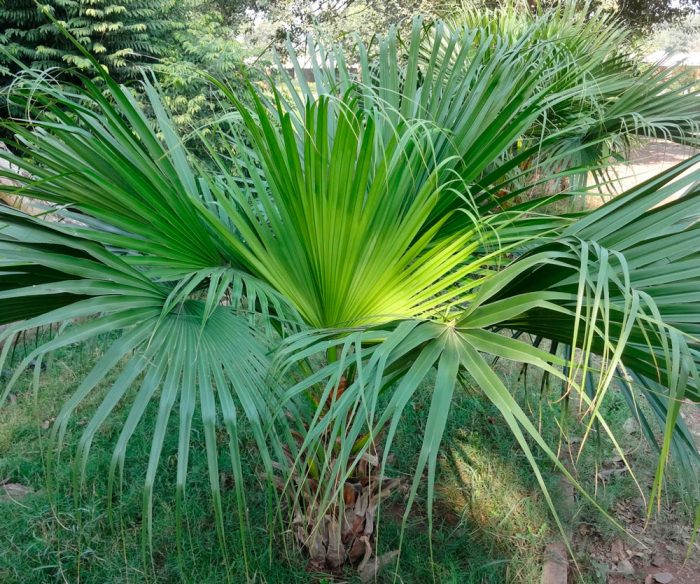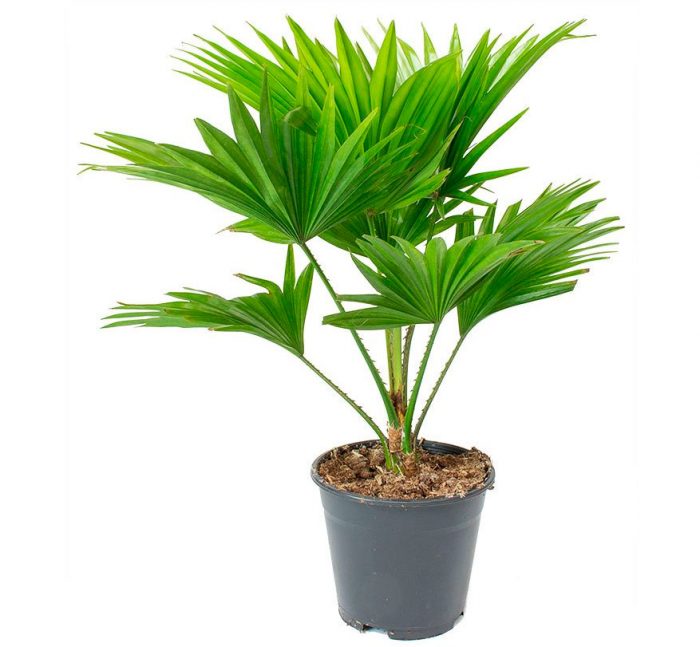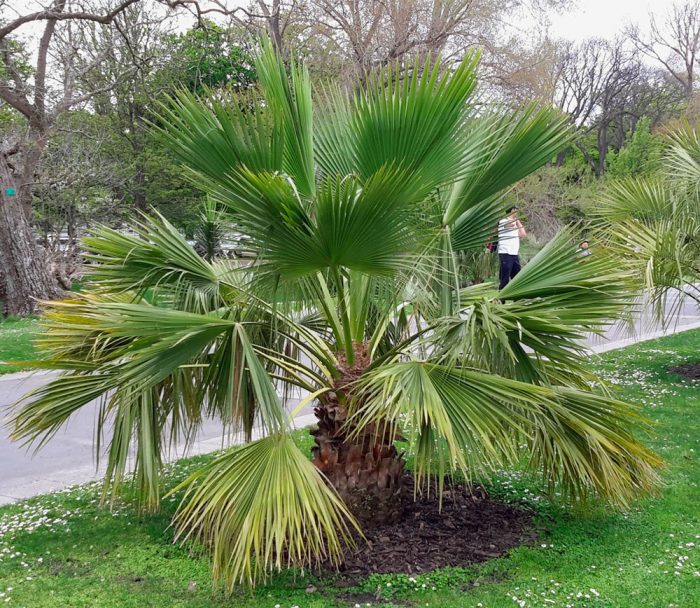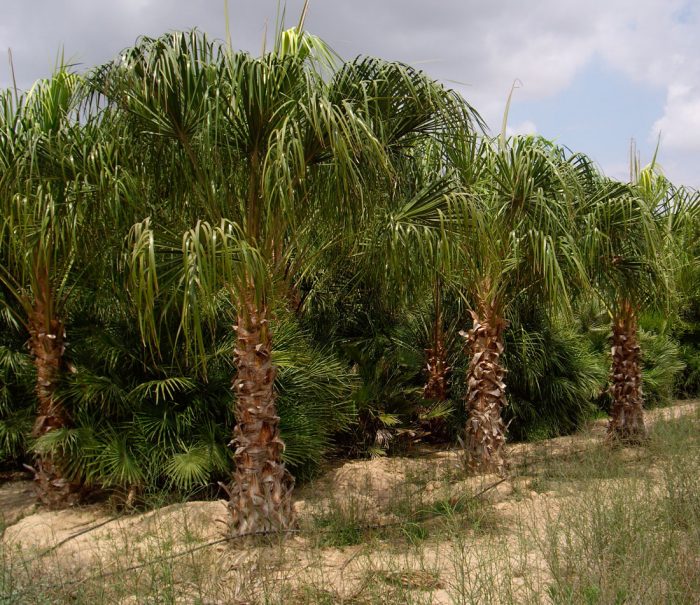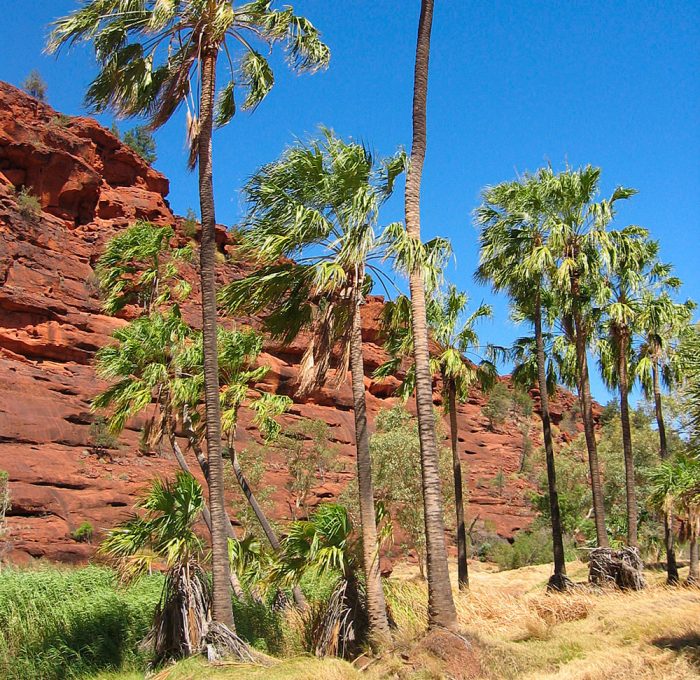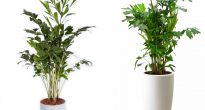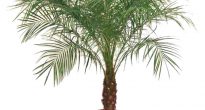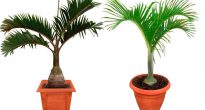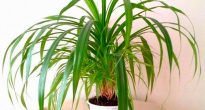The perennial plant Livistona is part of the Palm family. These plants are found naturally in Oceania, Southeast Asia, Australia and Africa. This genus was named in honor of the Livingston laird - Patrick Murray, who collected plants, and was also a student and friend of Andrew Balfour. This genus unites more than 30 species, some of which are cultivated in greenhouses. However, there are also types of Liviston that can be grown at home.
Content
Brief description of the cultivation of Livistons
- Bloom... Liviston palm is grown as an ornamental leafy plant.
- Illumination... A large amount of bright but diffused light is needed.
- Temperature regime... During the growing season - from 20 to 28 degrees, and in winter - from 14 to 18 degrees.
- Watering... During active growth, water is systematically and moderately, and during the dormant period - poorly and rarely.
- Air humidity... High humidity is required. In summer and spring, it is recommended to systematically moisten the foliage from a sprayer with warm water every day.
- Fertilizer... Top dressing is carried out regularly once every 20-30 days from April to August, for this they use a complex mineral fertilizer for palms. It is also very useful to sometimes moisten foliage from a spray bottle with a solution of trace elements.
- Dormant period... Not pronounced. However, in winter, all processes associated with the growing season slow down.
- Transfer... If necessary, when the root system becomes cramped in the pot.
- Reproduction... Seeds.
- Diseases... Leaf spot, root rot, late blight, sclerotinia, wilting and chlorosis.
- Harmful insects... Thrips, mealybugs, scale insects, whiteflies and spider mites.
Features of the Liviston palm
Most of the Liviston palm species are trees that can reach a height of 25 to 40 meters. But these palms are slow-growing and therefore can be grown indoors. The surface of the trunk is covered with dried petiole sheaths left over from dead leaf plates.At the very top of the trunk there is a crown, consisting of fan-shaped leaf plates of a rounded shape, which are dissected to the middle (sometimes deeper), their lobes are radially folded. Powerful leaf petioles, sharp along the edge, pass into the leaf plate with a rod 5–20 centimeters long. Inflorescences are axillary. When grown at home, such a plant almost never forms a trunk, but many leaf plates grow in it. If the palm tree grows in favorable conditions, then 3 new leaves can form in it a year.
Caring for a Liviston palm tree at home
Growing from seeds
If you do not yet have a Liviston palm tree at home, but you really want it, it is not at all necessary to purchase an expensive adult bush for this. It is quite possible to grow such a palm tree with your own hands from seed. Seed material needs mandatory scarification. For this, a not very deep incision is made on the surface of the seed, or the shell is thinned with an abrasive material. If this is not done, then the sprout will break through the dense and rigid shell for a very long time.
Seeds are sown in separate pots (peat pots can be used) or in disposable cups. They are filled by 2/3 with a loose moist soil mixture for seedlings, the pH of which should be in the range of 6.3–6.5. Seeds are planted to a depth of about 20 mm, then the container is covered with a film (glass) on top and transferred to a very warm (about 30 degrees) and well-lit place. Do not forget to ventilate the crops every day and, if necessary, moisten the soil mixture.
The first seedlings should appear after 1–4 months. They are advised to provide a large amount of bright light that must be diffused. After the length of the first leaf plate is 20–40 mm, the seedlings are transplanted into ceramic pots, and the soil mixture is used the same as for transplanting adult palms. During the first year, the young plant should be in partial shade.
Illumination
Young palms growing in natural conditions simply need shading from the scorching direct rays of the sun. But in indoor conditions, there is almost never too bright sun that can harm the plant. However, it is still better to shade the bush from the scorching afternoon sun, while its foliage suffers most of all not from direct rays, but from heated glass. It is because of this in the summer that the room where Livistona is located must be regularly ventilated. But it is best in the warm season, if possible, to transfer the bush to the garden and place it in the shade of trees. In indoor conditions, the palm tree grows best on the western windowsill. In order for the bush to develop symmetrically, and there is no curvature of the trunk, it must be regularly rotated 180 degrees around its axis once every 15 days.
Temperature regime
During the growing season, Liviston develops and grows best at an air temperature of 20 to 28 degrees. In winter, it is better to transfer the bush to a cool place (from 14 to 18 degrees), however, the temperature in the room should in no case fall below 12 degrees.
Pruning
It is possible to cut off old leaf plates only when their petioles are completely dry. If the tips have dried on the leaves, then it is not advisable to cut them off, since the remaining part of the plate will begin to dry faster because of this.
Watering
The clod of earth in the pot should not be allowed to dry out, as this has an extremely negative effect on the growth and development of the Liviston palm. In this regard, it is watered systematically, using soft and warm water for this, but make sure that no liquid stagnation occurs in the soil mixture. In winter, it is necessary to reduce the abundance and frequency of watering.
A palm tree in room conditions requires high humidity.Therefore, in the warm season, its foliage must be regularly moistened with a sprayer. However, if the weather is cloudy and cool, then it is better not to spray the bush. Protect the foliage from drafts and hot air currents, otherwise this can damage the leaf plates, which will cause the bush to lose its decorative appearance. Once every 30 days, the plant is recommended to arrange a warm shower.
Fertilizers
Top dressing is carried out only in April – August, once every 20–30 days. It is best to use a mineral complex fertilizer for palms in the form of a solution for this, and feeding is carried out only after preliminary watering, otherwise the roots may get burned. Also, every four weeks, the bushes are fed on foliage with a solution of trace elements. Remember that when the room gets colder than 18 degrees, the roots of the palm tree stop absorbing nutrients. The same is observed in the case when the pH of the soil mixture exceeds 7.5.
Liviston transplant
A bush is transplanted only if necessary, while younger plants are much more likely to need this procedure, compared to adult specimens. If the Liviston is already old, then it is better not to transplant it at all, in this case the top layer of the soil mixture with a thickness of about 50 mm is only regularly replaced.
How to understand that a palm tree already needs replanting? A palm tree is transplanted when the soil mixture in the pot turns sour, while it has a bad smell. Also transplanted is the plant whose root system has become too crowded in the pot. Most often, adult bushes are transplanted once every 3 years, and the procedure must be carried out in March, carefully transferring the palm tree from the old container to the new one. It is best to take a soil mixture with a pH of 5.6–7.5 for this; in addition, it must pass water well and retain its structure for a very long time. The approximate composition of the substrate is as follows: pine bark (2 parts) of fraction not less than 2 cm, coarse perlite (1 part), bone meal (1/10 part), coarse peat (2 parts), charcoal (1 part) of fraction not less than 1 cm, dolomite crushed stone (fraction 1.2 cm) or pebbles (1 part).
Take a tall pot, which will be 20-30 mm larger than the old one, and put a thick layer of drainage (expanded clay) on its bottom. Pull the root system of the bush out of the old container and carefully remove part of the felt layer of the roots, for this you can use scissors or pruners, which must be disinfected beforehand. Place the bush in a new container so that after all the voids are filled with fresh potting mix, it is no deeper in it than in the old pot.
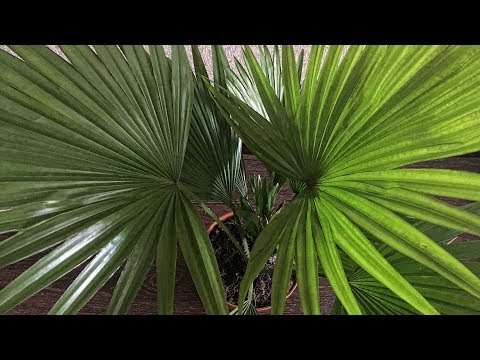

Watch this video on YouTube
Reproduction
Since this palm tree does not give growth and it only has 1 trunk, it can only be grown from seeds. How to do this is described in great detail above. When purchasing seed material, please note that it remains viable for only 1 year after harvest.
Diseases and pests
Diseases
The Liviston palm is highly resistant to viral and bacterial diseases. However, it can still suffer from fungal diseases such as root rot, sclerotinia, leaf blight and wilting.
When lesions are spotted, streaks and spots from black to brown-red are formed on the surface of the foliage, and most often these formations have a yellow border. Over time, the spots increase in size and join together, resulting in the formation of large, irregular necrotic areas. In some cases, specks form on very young leaf blades. It has been observed that leaf plates that are not sprayed with water are not affected by spotting.That is why some experts advise increasing the air humidity in another way, for example, you can pour wet pebbles into the pallet, on which a container with a palm tree is then placed. Also, in order to prevent the development of spotting, it is recommended to pay attention to the illumination: the foliage must necessarily receive the required amount of light, and even better if the lighting is very bright.
If a palm tree is affected by rhizostonia, late blight, fusarium or pythium, it will begin to rot. Seedlings, as well as Liviston seeds, can be affected by sclerotinia. As many people know, it is better to prevent the disease from affecting a plant than to treat it for a long time. That is why pay special attention to preventive measures for these fungal diseases:
- provide the bush with proper care, as well as the most suitable conditions for its growth and development;
- before sowing, the seed is immersed for 30-40 minutes in a solution of potassium permanganate for disinfection.
If, nevertheless, Livistona is affected by a fungal disease, then in order to cure it, it will be necessary to treat the bush with a fungicide solution.
Pests
Whiteflies, mealybugs, scale insects, thrips and spider mites can settle on such a plant. These pests are sucking, that is, they pierce the surface of the leaves and suck the juice out of them. In order to get rid of them, the palm is treated with an insecticide. But if scale insects or worms have settled on it, then before you spray the bush with a pesticide, you must remove the pests with a cotton swab moistened with alcohol. The treatment of the bush with an insecticide is carried out in the open air.
Please note that spider mites are not insects, so they are not afraid of insecticides. In this case, acaricides are used for processing. Today, on the shelves of specialized stores, you can find insectoacaricidal preparations that can destroy both arachnids and insects, for example: Aktara, Fitoverm, Aktellik, Akarin, etc.
Possible problems
Livistona can also suffer if it is not looked after properly or if it is not provided with suitable conditions for growth. For example, if the room is cool, the lighting is poor, and there is very little magnesium in the soil mixture, this can cause the development of chlorosis of the lower leaf plates. If the plant lacks nutrients, and the soil mixture is excessively acidic, and there is no manganese and iron in its composition, then chlorosis of young leaf plates may develop because of this. When the first signs of chlorosis appear for the palm, it is necessary to create optimal conditions, and it should also be fed foliarly with a nutrient solution that includes the missing elements.
If the bush lacks potassium, then its leaf plates begin to dry out. Initially, translucent spots of yellow or orange color are formed on the old foliage, after which necrosis of the edges of the plate appears. Then the leaf begins to dry, curl and changes its color to orange. If you find small necrotic spots on the foliage, then this is a sign that the flower is lacking in zinc. With a lack of nitrogen, the foliage becomes faded and its development worsens. If the potting soil is salted, the tips of the lower leaf plates will first turn brown, and then the leaves will darken entirely.
If in the summer spots of yellow or brown color have formed on the surface of the foliage, then this is the result of excessively intense lighting. Also, because of this, curliness of the leaves may develop. If the bush does not receive enough moisture, then the tips of its leaf plates die off, and the bush dries up. Moreover, in this case, the old leaf plates dry out first. If water regularly stagnates in the substrate, then because of this, the bush becomes dark and rot appears on it.
Types of livistons with photos and names
Below will be described those types of Liviston palm, which are most often grown by flower growers at home.
Chinese Livistona (Livistona chinensis)
A palm tree reaches a height of 10 to 12 meters, and its trunk diameter is 0.4–0.5 meters. She is originally from South China. The surface of the upper part of the trunk is covered with remnants of dead leaf stalks and fibers. And the bottom of the barrel has a jagged surface. The fan-shaped drooping leaf plates include from 50 to 80 folded segments, which are deeply incised at the tips. The leaves have wide petioles, the length of which can be up to 150 cm, on their lower surface there are many straight, short and rather sharp thorns. The length of the axillary inflorescence often exceeds 100 cm.
Livistona rotundifolia
Or liviston rotundifolia. In nature, this species can be found on the coastal sandy soils of the Moluccas and Java. The height of the trunk is up to 14 meters, and in diameter it reaches about 17 centimeters. Green glossy fan-shaped leaf plates of rounded shape reach about 150 cm in diameter, and they are dissected into folded segments by 2/3 of their length. The foliage has long (up to 150 cm) petioles, which are densely covered with thorns in the lower 1/3 of the part. The length of the axillary inflorescence is about 150 cm, it consists of yellow flowers. Since this species is most popular with flower growers, this article described how to care for it.
Livistona australis
This species is native to the subtropical humid forests of eastern Australia. The height of the columnar trunk of this palm is about 25 meters, while it reaches up to 0.4 m in diameter. At the base, the trunk is thickened and its surface is covered with scars, as well as the remnants of sheaths of leaf plates. The folded radially fanned leaves are divided into small lobes with double-cut ends. These glossy dark green leaf plates have long (about 200 cm) petioles, along the edges of which are densely located sharp thorns, painted almost brown. The length of the branched axillary inflorescence is about 1.3 m.
Livistona decipiens
This single-stemmed palm tree is slow in growth, and it reaches a height of about 12 meters, a trunk diameter of up to 25 centimeters. The leaf plates are fan-shaped; they are dissected into drooping segments in numerous veins. Their front surface is dark green, and the wrong side is grayish-waxy. The leaf petioles have many small teeth.
Livistona mariae
Under natural conditions, this large palm tree can reach a height of about 30 meters. At the base, the gray trunk has a thickening, and its surface is covered with the remnants of leaf sheaths. The length of the fan leaf plates, like their petioles, is about 200 centimeters, they are divided into drooping lobes of a linear shape, and at a young age they have a reddish-pink color. As the lobes grow and develop, they turn reddish-bronze, and eventually become green-blue. Simple panicles consist of cream or yellowish flowers. Glossy fruits of a spherical shape are colored black, they reach about 20 mm in diameter.
In addition to the species described above, Easton Liviston is also grown at home, beautiful and other species that are still poorly understood today.
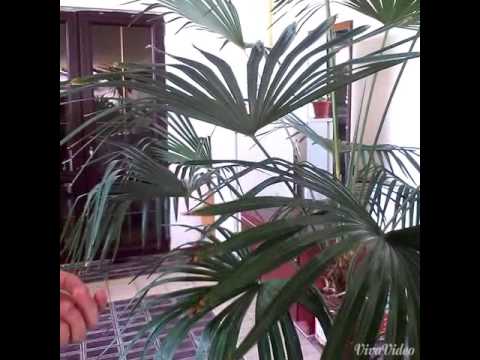

Watch this video on YouTube

